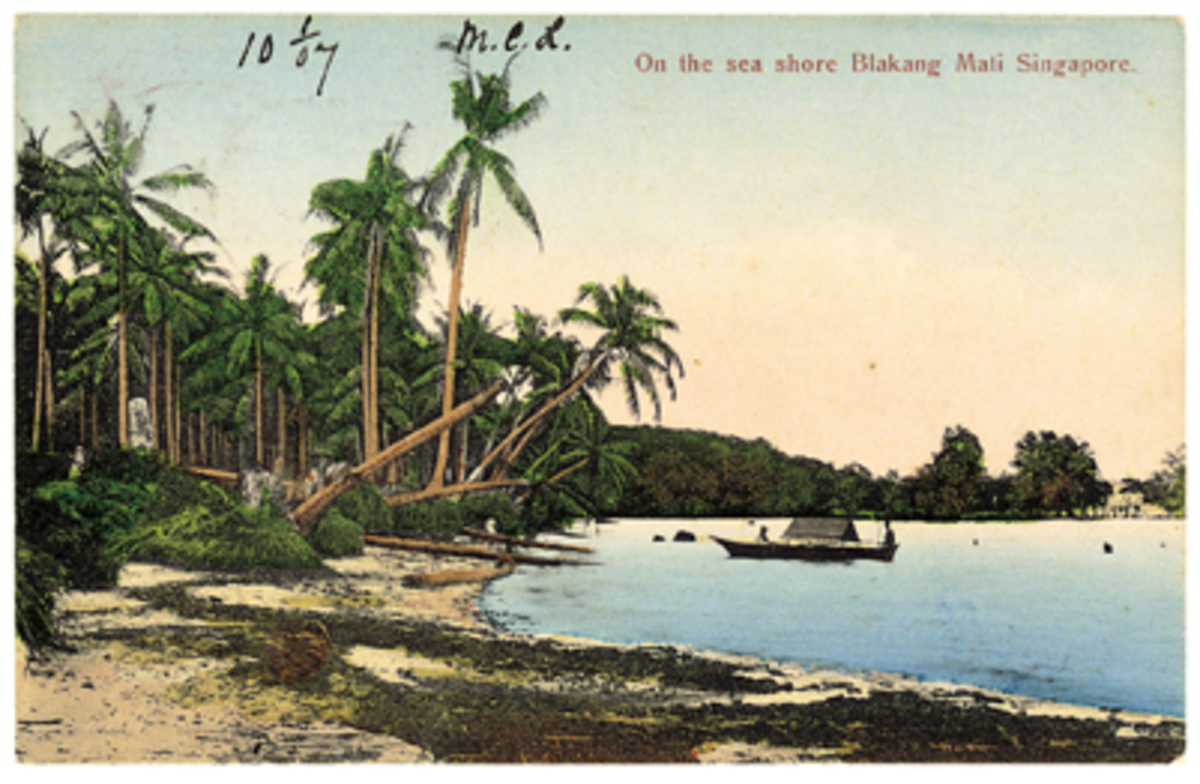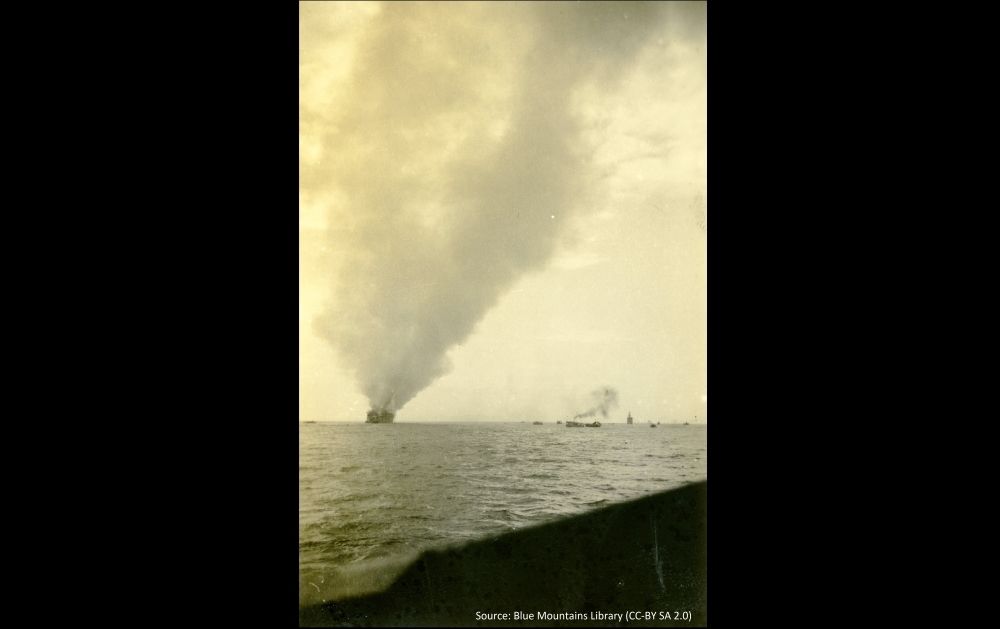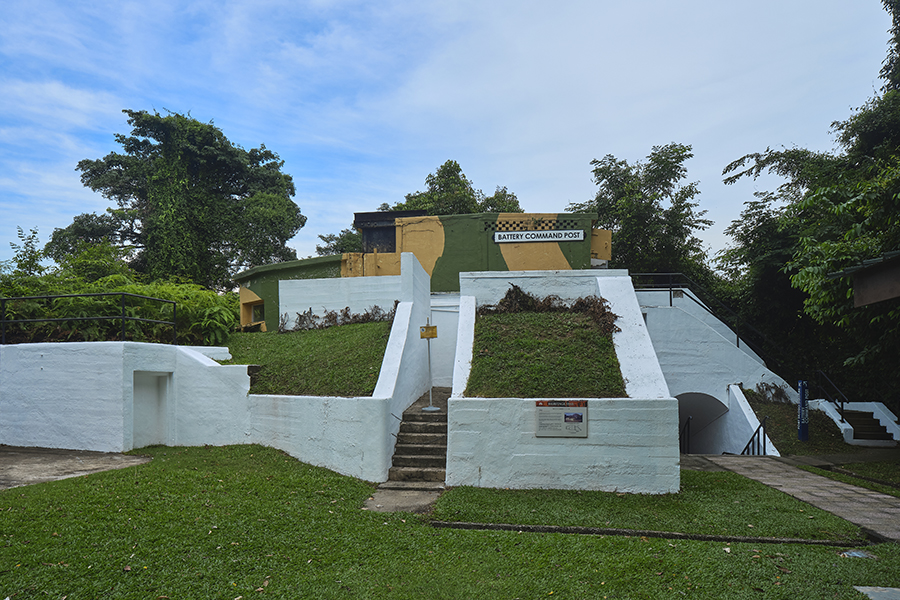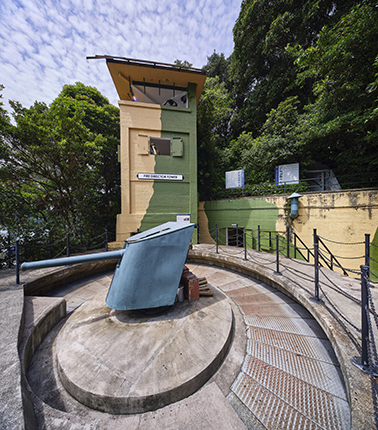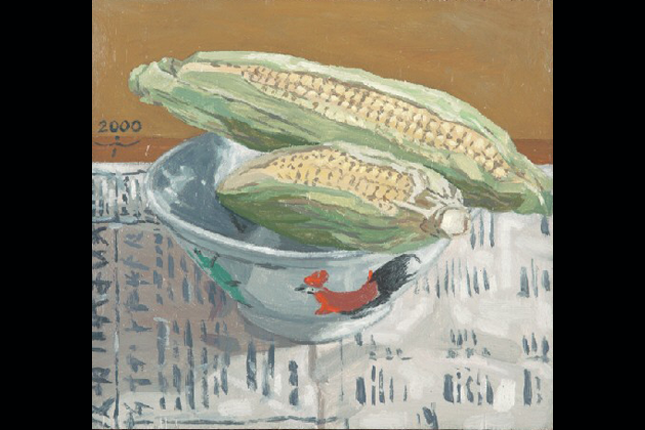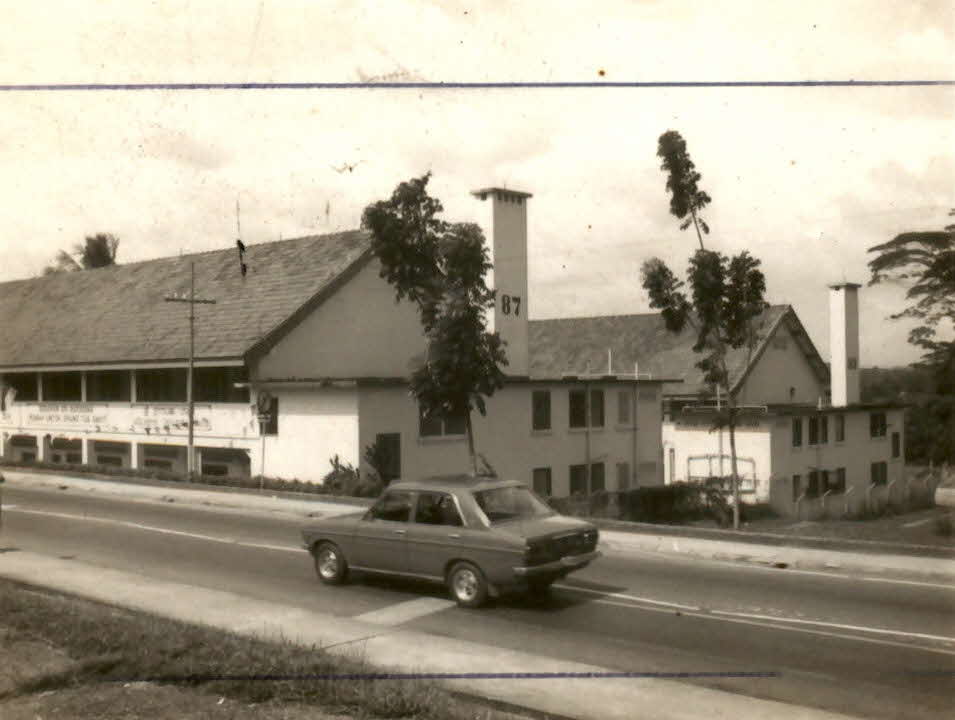Fort Connaught was a coastal fort sited on Pulau Blakang Mati, present-day Sentosa Island. The fort was part of a system of forts built from the mid to late 1800s to defend Singapore from maritime threats. By 1880, three coastal artillery forts were completed on the island. From west to east there was Fort Siloso, Fort Serapong, and Fort Connaught. Together with the Mount Imbiah Battery, and the Anti Motor Torpedo Boat (AMTB) defences at Berhala Reping, they form a formidable coastal defence that protected the vital shipping passages to Keppel Harbour. Up to World War Two, Pulau Blakang Mati was the most heavily fortified place in Singapore.
Fort Connaught started off as Blakang Mati East – renamed in 1890 after the Duke of Connaught’s visit to Singapore. Construction of the fort had started on 4 July 1878 and a year later the fort’s high walls were completed. The fort was armed with three 7-inch Rifled Muzzle Loading (RML) guns and two 64-pounder RML guns. Its armament was similar to those at Fort Siloso on the western end of Pulau Blakang Mati, suggesting that both forts had similar roles. In 1885, the guns at Fort Connaught were replaced by two 9.2-inch Mark IV guns. They were later upgraded to the Mark X versions of the gun sometime after 1937 when the fort was rebuilt to add a third 9.2-in gun to the fort. These guns were the second largest type of guns installed in Singapore (the largest being the 15-inch guns) and provided excellent deterrence against maritime threats.
Military Capabilities of Fort Connaught

The Mark X version of the 9.2-inch guns installed at Fort Connaught could defeat most warships at the time because they were armed with smaller guns that had a shorter ranger and less firepower. Only the largest warships like battleships and battlecruisers armed with 15-inch or larger guns had the capabilities to engage Fort Connaught’s 9-inch guns.
When the Japanese launched their invasion of Singapore in December 1941, they chose to avoid direct confrontation with the forts at Pulau Blakang Mati despite their powerful navy. They instead chose to invade Malaya, advance south, and attack Singapore’s weakly defended backdoor. What the Japanese did not expect, was that the guns at Fort Connaught could be turned to face them. The three 9.2-inch guns at Fort Connaught were sited on emplacements that could be turned beyond the normal range of traverse to fire at enemy targets on the Singapore main Island. In order to do that however, the guns’ power cables had to be disconnected as the cables were measured and installed with sufficient turning range to engage enemy attack primarily from a seaward direction. This was also the reason why the 9.2-inch guns were equipped with a much larger quantity of armour-piercing (AP) shells compared to High Explosive (HE) shells. AP shells were designed to penetrate armour before denotation 1 . HE shells explode on impact and are much more effective against unarmoured vessels such as troop carriers. HE shells functioned in a similar way to artillery shells in that they generate a large and deadly explosion on impact. Regardless of the type of artillery shells on hand, Fort Connaught’s 9.2-inch guns were brought to bear on the Japanese on Singapore Island during the Battle for Singapore.
Fort Connaught in the Battle for Singapore
While the 9.2-inch Mark X guns could still function without electrical power, it was a significant effort for troops to operate. The gunners had to load each of the gun’s 380 pound (172 kg) shells manually - lifting and moving each shell with human labour from the storage castmate to the gun before carefully loading the shell into the gun to be fired. Despite the exhausting work of keeping the guns firing, the gunners at Fort Connaught were able to rain artillery fire against Japanese soldiers that had set up a forward headquarters at Tengah airbase –damaging the airfield. In the hours between 0130 to sunrise of 11 th to 12 th February, sixty-three AP shells from Fort Connaught reportedly came once every few minutes that cratered the ground at Tengah with holes five meters deep and sixteen meters wide. 2 The guns also fired on targets at Pasir Panjang, Ulu Pandan Village, Jurong Road and Bukit Timah.
On 13 th February, Fort Connaught’s guns were redirected to fire at the Japanese forces that were converging at Bukit Timah. The blast impact of each AP shell, according to a Japanese eye-witness, was so great that the limbs of rubber trees were ripped off sending splitters everywhere. 3 If a shell landed in the nearby reservoir, it created “huge columns of spray.” 4 During the artillery bombardment at Bukit Timah, Japanese soldiers kept their heads down and stayed inside their foxholes. A Japanese soldier described the AP shells fired at them were “like petrol drums” 5 flying overhead, and when it landed near them, the walls of their foxholes cave in. 6
On 14 th February, the magazine lifts at Fort Connaught broke down. The gunners now had to manually move shells from their underground store up a narrow flight of stairs to the guns. It was exhausting work for the gunners and reduced the guns’ rate of fire considerably. Yet the gunners kept the guns in action until an order came to prepare for the demolition of the guns to prevent them from being captured by the enemy. Fort Connaught’s coastal defence guns were the first to be destroyed in the morning of 14 th February. They were soon followed by the 9.2-inch guns. During the defence of Singapore, Fort Connaught fired all of its store of 75 HE shells, and 217 AP shells. 7
The destruction of the coastal artillery guns also took place at Fort Siloso and Fort Serapong. After all the guns were put out of action, the gunners from the forts rallied at Fort Connaught, reorganised themselves into infantry formations to prepare for a final defence around the fort. 8 The British surrendered on 15 February 1942 but the defenders gathered at Fort Connaught, unlike those at other nodes of Sentosa, appeared not to have receive the message and waited for days for further instructions. During that time, they saw several boats off the coast of Pulau Blakang Mati, people being pushed off, and the sound of machine-guns could be heard soon after. It was when bodies were washed up the shore near the fort that the defenders realised that they had witnessed the massacre of civilians who were pushed off the boats and machine-gunned. 9 Some of the bodies were recovered and were buried by the troops until they themselves were finally transported off the island on 27 February, and into captivity.
After the War
Little is yet known about the use of Fort Connaught during the Japanese Occupation. After the end of World War Two, a British team led by Colonel F. W. Rice - returned to Pulau Blakang Mati to assess if the forts on the island could be returned to service. Colonel Rice’s report on the condition of Fort Connaught read: “this is an excellent site and has been little damaged. The approaches to it are good and it is not badly overgrown. Comparatively little effort would be necessary to restore this battery". 10 The 9.2-inch guns were reportedly “badly rusted and have had the breeches blown out” 11 , which is likely the work of the gunners in 1942. The 9.2-inch gun emplacements were described as “serviceable having suffered only minor damage,” 12 and the magazine lifts appeared intact but require an overhaul and replacement of motors, 13 confirming that the lifts had indeed failed during the Battle of Singapore. Rice’s report also noted that the Japanese have “built in some brickwork to divide the magazine space.” 14
Despite Rice’s optimistic report on the condition of Fort Connaught, judging by the condition of the fort today, it would appear that the fort was not returned to service. His description on the structures that survived the war nearly matches the condition of the fort today. One of the surviving 9.2-inch gun emplacement has suffered damage but it appears to be serviceable, and the brickwork constructed by the Japanese is still inside the magazine space. However, in the decades the followed Rice’s 1946 report on Fort Connaught, much redevelopment has taken place on Sentosa. Much of the hill that Fort Connaught was on was removed, and the soil was used for land reclamation to the east of the former fort, creating Sentosa Cove. The 9-inch gun No.1 and No.2 gun emplacements survived the dredging of the hill but were left standing like individual mounts on levelled ground. The two former gun emplacements were later filled in and the land is now part of the Sentosa Golf Club. The elevated ground is now a rest area for golfers offering a panoramic view of the golf course. The remains of the Observation Post and No.3 gun emplacement, are now overgrown with nature and is no longer easy nor safe to access. They remind us that this was once an important fort that took part in a desperate fight to defend Singapore during World War Two.
References:
1 When fired against a warship, a successful hit by an AP shell would punch through the armoured plates of the ship, explode inside the ship, cause widespread damage to the ship’s compartments, and disable the ship.
2 Tsuji, Singapore 1941–1942 , First published as Masanobu Tsuji, Singapore: The Japanese Version , Constable, London, 1960, pp. 253–4
3 K, Blackburn and K, Hack, Did Singapore Have to Fall?: Churchill and the Impregnable Fortress , RoutledgeCurzon, London, 2004, p115
4 K, Blackburn and K, Hack, Did Singapore Have to Fall?: Churchill and the Impregnable Fortress , RoutledgeCurzon, London, 2004, p115
5 K, Blackburn and K, Hack, Did Singapore Have to Fall?: Churchill and the Impregnable Fortress , RoutledgeCurzon, London, 2004, p115
6 K, Blackburn and K, Hack, Did Singapore Have to Fall?: Churchill and the Impregnable Fortress , RoutledgeCurzon, London, 2004, p115
7 WO172/176, War Diary, Fort Connaught
8 WO172/176, War Diary, Fort Connaught
9 K, Blackburn and K, Hack, Did Singapore Have to Fall?: Churchill and the Impregnable Fortress , RoutledgeCurzon, London, 2004, p86
10 WO203/6034, Singapore and Penang Coast Artillery: Report by Colonel F.W Rice
11 WO203/6034, Singapore and Penang Coast Artillery: Report by Colonel F.W Rice
12 WO203/6034, Singapore and Penang Coast Artillery: Report by Colonel F.W Rice
13 WO203/6034, Singapore and Penang Coast Artillery: Report by Colonel F.W Rice
14 WO203/6034, Singapore and Penang Coast Artillery: Report by Colonel F.W Rice












